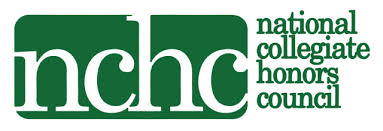Social Transformation through Art
Fine Arts as Global Perspective - HNRS 2113
Instructor(s): Megan Jacobs
Course Description
Art can reflect and can alter the historical, social and political framework in whichit was created. We will investigate how art has been used as a tool to transform
cultural perspectives, alter policies, and prompt social change from the 1900s to
today. The Industrial Revolution, Great Depression, Civil Rights movement and
Women’s Liberation movements have had a direct impact on seminal artists and
their methods of expression and artists have resisted, protested, and supported
shifts. Social photographers such as Jacob Riis and Lewis Hine who advocated
for child labor rights critiqued industrialization. Dorothea Lange and Walker
Evans were part of the photography group in the Farm Security Administration
(FSA) and who documented the lives of American farmers. These images
educated Americans and led to policy changes: aid for farmers during the Great
Depression. The Civil Rights and Women’s Liberation movements called into
question the “body” and artists created entirely new methods of expression, such
as performance art, to explore and support this new idea.
In addition to looking at social art works we will explore the line between
traditional methods of protest and social art. What makes a performance “action”
different from a demonstration? In some instances art has tested public values
and the challenges to the social expectations of a work of art have lead to
censorship. We will investigate artworks that have been censored due to their
content and how they challenged the status quo of their time. Further, we will
investigate readings that argue for and against the need for artists to make work
that politically challenges their society.
We will also explore a range of contemporary artists whose methodologies,
materials and approach challenge cultural norms. JR, Ai Wei Wei, Vik Muniz,
Yolanda Dominguez, Alfredo Jaar, and Krzysztof Wodiczko use mixed-media,
installation, photography, and performance to confront economic systems, media
representations, sexism, and censorship. Students will evaluate these
contemporary artists use of materials and media to further their concepts. Once
a foundation of knowledge has been laid we will turn our attention to the creative
process through an investigation of materials and practices—performance, mixed
media, and photography. Students will research their communities and develop a
series of solo and collective creative projects that promote social transformation
in their communities!
Texts
Excerpts of readings from the following sources will be made available digitally on the course website.
Berger, John. Ways of Seeing.
Brand, Peggy Zeglin -“Disinterestedness and Political Art”
Freeland, Cynthia. But, Is it Art?
Mesch, Claudia. Art and Politics: A Small History of Art for Social Change Since 1945 (I. B. Tauris, 2013) ISBN-13: 978 1848851108
Thompson, Nato. Living as Form: Socially Engaged Art from 1991-2011, (The MIT Press, 2012). ISBN-10: 0262017342
Thompson, Nato and JR. Can Art Change the World?
Rushdie, Salman, “Outside the Whale,” in Imaginary Homelands (London: Granta Books, 1991) p. 87-106.
You are required to have read weekly readings by the first class period for which they are listed. Some of these readings are quite dense and may need to be read multiple times. Please plan ahead and start reading early. Please be prepared to share your findings with the class.
FILMS
Poses by Yolanda Dominguez
Inside Out: The People’s Art Project by Alastair Siddons



Social Media
For news, information, prizes and more fun stuff follow us on our social media!
Honors College Resources